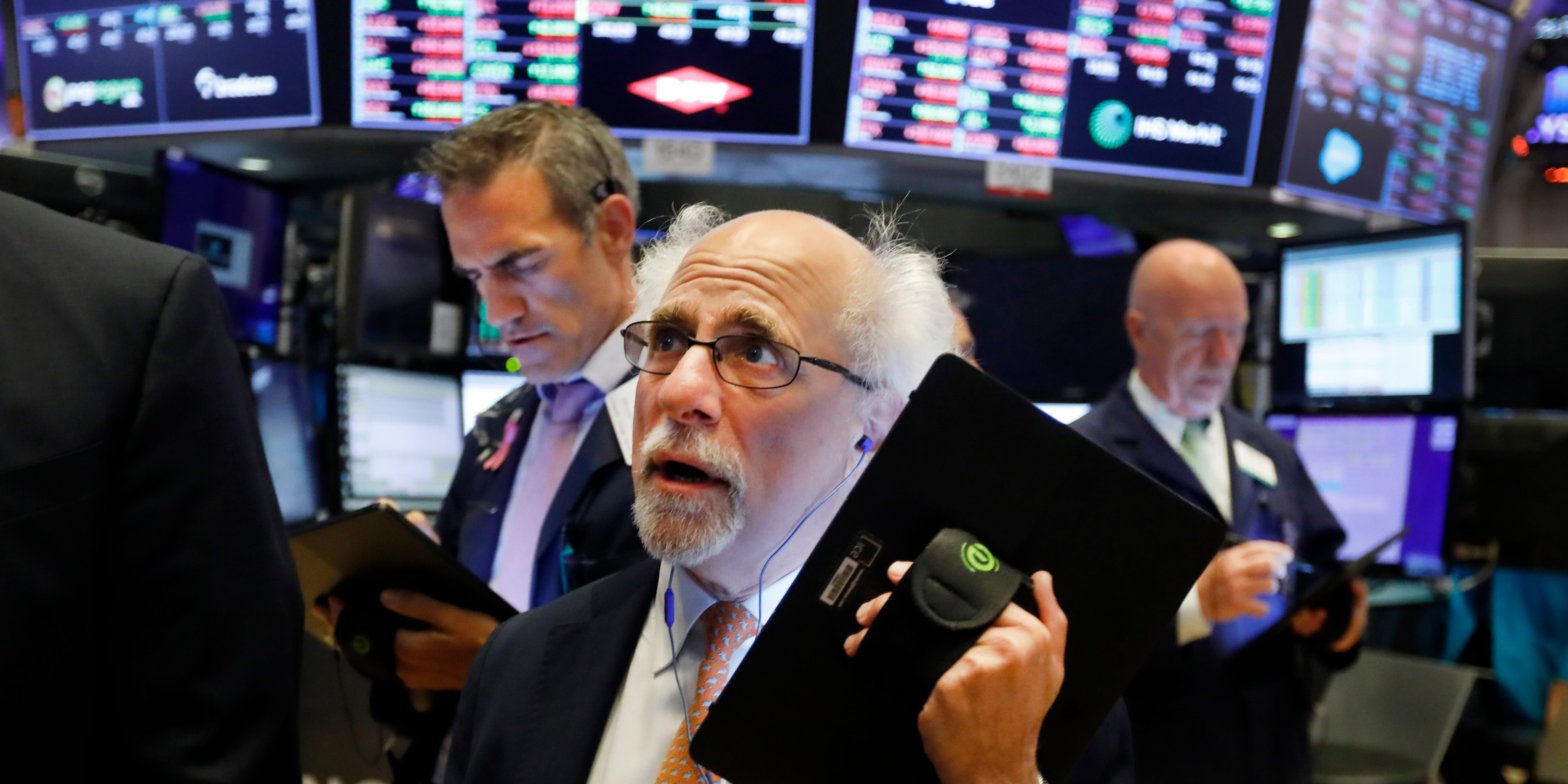Peter Tuchman has been at the New York Stock Exchange for almost 38 years and is the most-photographed trader on Wall Street. Stocks plunged last week on concerns of contagion from the collapse of Silicon Valley Bank. “We’ve never seen the volatility that we’re seeing here. The intraday madness,” Tuchman said. Loading Something is loading.
Thanks for signing up!
Access your favorite topics in a personalized feed while you’re on the go.
On the morning of the largest bank failure since 2008, Peter Tuchman had four shots of espresso, two glasses of orange juice, and geared up for his day.
Immediately, stocks were down that morning. The S&P 500 was having its worst week of the year. Markets were going haywire shortly after the opening bell.
Tuchman, a stock broker with nearly 38 years of experience on the trading floor is the most-photographed trader on Wall Street, and he’s seen his share of volatility.
He’s weathered the stock market crash of 1987, the bursting of the dot-com bubble, the financial crisis of 2008, and the COVID-19 sell-off of 2020.
On March 10, when Silicon Valley Bank collapsed, “shit was really hitting the fan,” he told Insider.
Tuchman describes the New York Stock Exchange as “the delta of all information,” and the “ultimate pricing mechanism” for the world’s markets, and on that Friday, investors and news outlets were calling him even more than usual for a pulse check.
Hedge funds, large institutions, wealthy individual investors and customers with “skin in the game” were reaching out to Tuchman and other brokers on the floor, asking: “What’s going on? How much is for sale? How much is to buy? Where are we at?” he said. “We are the eyes and ears of publicly-traded companies.”
“It’s important that within the world of liquidity and volatility that there’s a human being at the point of execution, making decisions, not a machine, not a robot, not an algo,” he said.
Panic rattled Wall Street and equities plummeted on concerns about what’s next to fall under the weight of the Federal Reserve’s rising interest rates, along with contagion from SVB, which serviced more than 50% of all venture-backed companies in the US and whose fall marked the biggest calamity since the last financial crisis.
Bank shares led the plunge on Friday, posting their worst week since 2020. The decline in markets was fueled by fear hitting SVB peers like Western Alliance Bancorp and Signature Bank, which both shed over 20% on the day. Like SVB, Signature would go on to be taken over by the FDIC that weekend.
“We’ve never seen the volatility that we’re seeing here. The intraday madness,” Tuchman said about the last few years in financial markets. “Things that used to take generations to happen, now can happen between lunch and your coffee break, right? We can be in a bear market at 11 in the morning, and by three o’clock we’re in a bull market.”
He added: “Well, that’s insane. That used to take 20 years to happen. Now, it happens over lunch.”
Tuchman didn’t eat lunch on Friday, but he typically doesn’t anyway.
Tuchman said when Silicon Valley Bank collapsed last week “shit was really hitting the fan.” Reuters On the floor, Tuchman gets a sense that “something serious is happening” when multiple stocks halt trading at once. It’s a pricing mechanism called “limit up, limit down,” which is done temporarily to mitigate extraordinary volatility when price declines in individual securities reach levels that may exhaust market liquidity.
In Tuchman’s words: “We give everybody a chance to figure out what they want to do because nobody is advantaged from stocks going up 30 points and down 40 points. It’s just not rational.”
He added: “It gives everyone a minute to calm down, see where the bodies are buried, and then make a decision going forward.”
Less than one minute after the opening on Friday at 9:30 a.m., First Republic Bank, another SVB peer, halted trading for six minutes. The stock paused 12 others times that day. Western Alliance followed suit, pausing 20 times intraday, according to historical data from the New York Stock Exchange.
“We do trade a lot of the contagion stocks so suddenly [we] are noticing the market is selling [them] off radically,” he added.
Monitors cover nearly every nook and cranny of the trading floor. Fast-talking brokers are hunched over their screens, taking calls, while digesting the barrage of headlines to dissecting what’s moving markets.
“We are surrounded by all the information that make up the market. I watch at every given second what’s going on with all that information,” he said, gesturing at the hundreds of monitors around us. “You’re seeing everything in real time.”
There’s always a volatility somewhere, Tuchman says, but that’s part of the job.
There was a sense that more trouble was brewing as traders left for the weekend. The government didn’t announce that it would backstop losses for SVB and Signature Bank depositors until Sunday evening, leaving investors in the lurch over what would happen next.
“Markets don’t like unknowns and anxiety,” he said. “We didn’t know a lot more than we knew. That’s when you have fear in the market and that’s why we had the massive sell-off on Friday.”
He added: “I call it a perfect storm. You’ve got a lack of information and transparency and clarity. You’ve got a weekend coming up. You’ve got a looming Fed meeting. You’ve got the world trying to come out of a pandemic. You’ve got a massive interest rate raising environment. You’ve got a tech sector under fire. You’ve got retail sales here. All eyes are on the market.”
